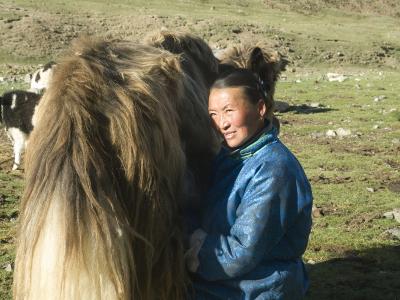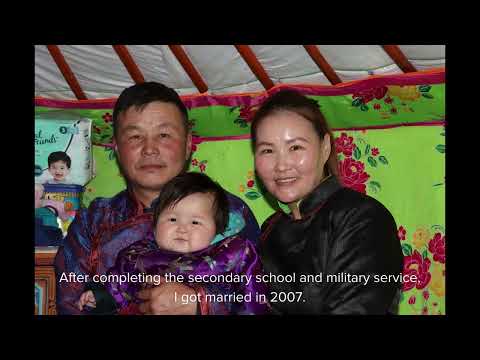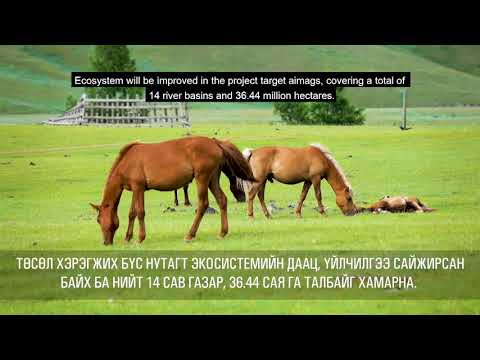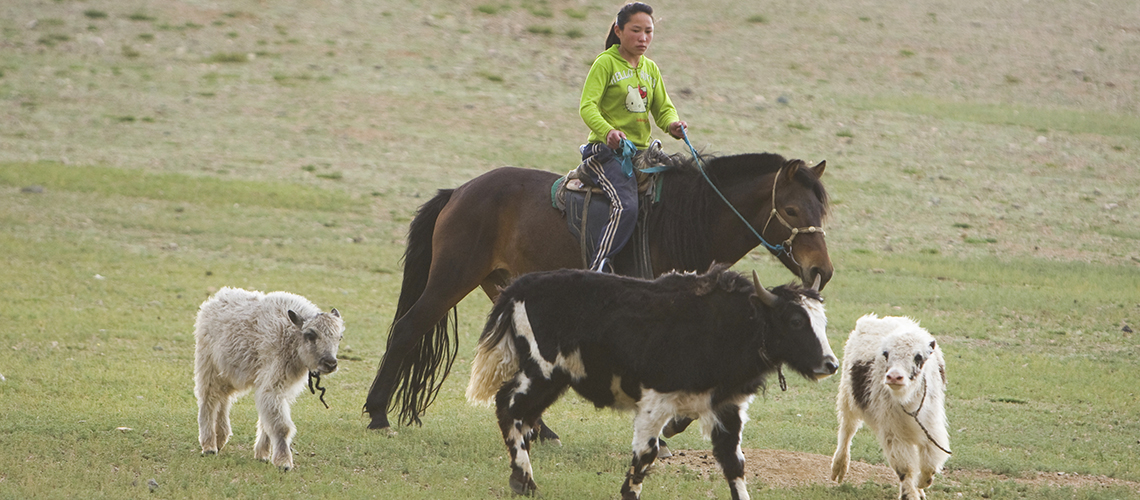
Photo:
With an observed temperature increase of 2.1°C over the past 70 years , Mongolia is among the countries most impacted by climate change. Increased temperatures, coupled with decreased precipitation, have resulted in a drying trend impacting pastures and water sources, and shifting natural zones. Changes have also been observed related to the frequency and intensity of extreme events, including disasters brought about by dzud (summer drought followed by harsh winters), drought, snow and dust storms, flash floods and both cold and heat waves.
Responses to climate impacts by herders have not been informed by climate information or by the potential impact of those responses on land and water resources. Unsustainable herding practices and livestock numbers are further stressing increasingly fragile ecosystems and related ecosystem services.
Livestock productivity and quality has been declining in the changing landscape due to drought conditions, heat stress, harsh winters and unsustainable practices, resulting also in reductions in outputs for subsistence and important income sources. Studies indicate that livestock sector production decreased by 26 percent compared to that of the 1980s, along with its contribution to the country’s economy.
Herder households make up one third of the population in Mongolia, approximately 160,000 households or 90 percent of the agriculture sector. Around 85 percent of all provincial economies in are agriculture-based. While herder households are the most exposed to climate risks, their scale and thus potential impact also means that tailored interventions can support transformational change towards more climate-informed and sustainable herder practices, benefitting the sector, the economy and the environment.
Led by the Ministry of Environment and Tourism, with the Ministry of Agriculture and Light Industry as a key partner, this 7-year project project, seeks to strengthen the resilience of resource-dependent herder communities in four aimags (provinces) vulnerable to climate change: Khovd, Zavkhan, Dornod and Sukhbaatar, thus covering steppe, desert steppe, mountain, mountain steppe and forest steppe zones.
With funding from the Green Climate Fund, the UNDP-supported project focuses on three complementary outputs:
- Integrating climate information into land and water use planning at the national and sub-national levels
- Scaling up climate-resilient water and soil management practices for enhanced small scale herder resource management
- Building herder capacity to access markets for sustainably sourced, climate-resilient livestock products
It is expected to contribute to several Sustainable Development Goals: SDG1 No Poverty, SDG12 Responsible Consumption and Production, SDG13 Climate Action, SDG15 Life on Land and SDG17 Partnerships for the Goals.
- District
- Local Governments
- National Governments
- United Nations Development Programme (UNDP)
The direct beneficiaries of the project will be 26,000 herder households (130,000 people) in the four target aimags. As Output 1 national policy, indirect beneficiaries include all 160,000 herder households (800,000 people). The project will directly benefit 4.5% of the Mongolian population and indirectly 26%.
- Ministry of Nature, Environment, and Tourism, Mongolia
- Ministry of Agriculture and Light Industry, Mongolia
- National Emergency Management Agency, Mongolia
- United Nations Development Programme (UNDP)
Expected outcomes
Output 1: Integrate climate information into land and water use planning at the national and sub-national levels
Activity 1.1. Enhance technical capacity for long-term climate resilient development planning, and medium-term response planning capacity
Activity 1.2. Integration of climate change and climate-informed carrying capacity into aimag and soum level development plans (incl. Integrated River Basin Management Plans (IRBMP))
Activity 1.3. Analytical products to support policy and regulatory transformation promoting sustainable land and water management and resilient herder livelihoods
Output 2: Scaling up climate-resilient water and soil management practices for enhanced small scale herder resource management
Activity 2.1. Enhance cooperation among herders on sustainable use and stewardship of shared land and water resources (formalized through Resource User Agreements)
Activity 2.2. Reforestation of critical catchment areas to protect water resources and ecosystem services
Activity 2.3. Establish haymaking and pasture reserve areas, and emergency fodder storage facilities to reduce volatility to livelihoods related to climate change induced extreme events
Activity 2.4. Improve water access through protection of natural springs, construction of new water wells, rehabilitation of existing wells and water harvesting measures
Output 3: Build herder capacity to access markets for sustainably sourced, climate-resilient livestock products
Activity 3.1. Identify public-private-community partnership for sustainably sourced climate resilient livestock products
Activity 3.2. Establishment and training of Herder Producer Organizations (or cooperatives)
Activity 3.3. Improve traceability for sustainably sourced, climate resilient livestock products
Activity 3.4. Generation and dissemination of knowledge products to support private-sector engagement and herder enfranchisement in climate-resilient and sustainable production in Mongolia
- Image
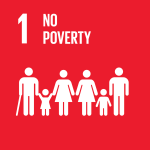
- Image
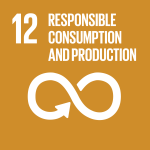
- Image

- Image
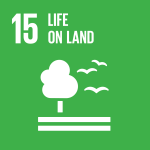
- Image
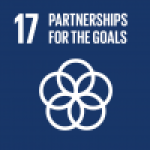
With the objective of strengthening the resilience of resource-dependent herder communities in four aimags vulnerable to climate change, this project seeks an integrated approach to address climate change impacts on herder livelihoods and on the natural resources on which they rely.
This requires strengthening capacity to generate climate models for longer term climate resilient planning, while reconciling the ambitious economic development goals of livestock sector with the limits of increasingly fragile land and water sources due to climate change.
To do this, the project complements significant investment from the Government of Mongolia related to the livestock sector and natural resources management, while addressing key barriers through strengthening the computing and capacity needs for long term climate-informed planning, investments in water access points, and support to the policy transformations needed to remove incentives for maladaptive herder practices.
The project will strengthen capacity of the National Agency for Meteorology and Environmental Monitoring (NAMEM) to collect and analyze the data necessary for climate-informed planning.
This will include investments to computing equipment and data storage, as well as technical training to enable climate-informed and risk-informed livestock planning. Support will also be provided to integrate climate change into aimag and soum level development plans to ensure that local planning considers climate change in regards to carrying capacity of land resources and guidance to herders on Integration of climate change and climate-informed carrying capacity into aimag and soum level development plans
The project will apply Ecosystem-based Adaptation (EbA) measures to protect land and natural water resources, while also establishing or rehabilitating water wells for livestock.
Using community-based resources management, herders will coordinate on rotational pastures and sustainable use of water resources, as well as establishing means of maintaining EbA results and water well investments. This will relieve pressure on rivers, streams and ponds as well as on over-utilized pastures which are increasingly fragile due to climate change.
Support to haymaking and pasture reserves, and related storage, will ensure livestock are better able to survive increasingly harsh winters, and losses to subsistence herders are reduced. Stronger and healthier animals are not only able to survive the harsh climatic events (i.e. dzud) but also are less likely to be affected by outbreak of infectious diseases.
The project will also support the planned policy transformations under the National Mongolian Livestock Programme, by ensuring that changes are informed by climate risk.
Analytical products will be developed to inform related programmes, such as government investments in livestock commodities development and dzud relief programmes to ensure that support does not inadvertently incentivize growing livestock numbers against land and water resources which are increasingly drying due to climate change.
The project will also identify public-private-community partnerships for sustainably-sourced, climate-resilient livestock products; and in association with this, support the establishment and training of Herder Producer Organizations (or cooperatives) with support to include general business and market specific training in production, post-harvest processing, post-harvest value addition and on-site storage specific to the commodity value chain.
For more project details, please refer to the project Funding Proposal.
'Climate adaptation and risk management project to commence in Mongolia', UNDP Mongolia, 30 March 2021
Output 1: Integrate climate information into land and water use planning at the national and sub-national levels
Activity 1.1. Enhance technical capacity for long-term climate resilient development planning, and medium-term response planning capacity
Activity 1.2. Integration of climate change and climate-informed carrying capacity into aimag and soum level development plans (incl. Integrated River Basin Management Plans (IRBMP))
Activity 1.3. Analytical products to support policy and regulatory transformation promoting sustainable land and water management and resilient herder livelihoods
Output 2: Scaling up climate-resilient water and soil management practices for enhanced small scale herder resource management
Activity 2.1. Enhance cooperation among herders on sustainable use and stewardship of shared land and water resources (formalized through Resource User Agreements)
Activity 2.2. Reforestation of critical catchment areas to protect water resources and ecosystem services
Activity 2.3. Establish haymaking and pasture reserve areas, and emergency fodder storage facilities to reduce volatility to livelihoods related to climate change induced extreme events
Activity 2.4. Improve water access through protection of natural springs, construction of new water wells, rehabilitation of existing wells and water harvesting measures
Output 3: Build herder capacity to access markets for sustainably sourced, climate-resilient livestock products
Activity 3.1. Identify public-private-community partnership for sustainably sourced climate resilient livestock products
Activity 3.2. Establishment and training of Herder Producer Organizations (or cooperatives)
Activity 3.3. Improve traceability for sustainably sourced, climate resilient livestock products
Activity 3.4. Generation and dissemination of knowledge products to support private-sector engagement and herder enfranchisement in climate-resilient and sustainable production in Mongolia
Inception workshop 2021, TBC
UNDP will perform monitoring, evaluation and reporting throughout the reporting period, in compliance with the UNDP POPP, the UNDP Evaluation Policy.
The primary responsibility for day-today project monitoring and implementation rests with the Project Manager. UNDP’s Country Office will support the Project Manager as needed, including through annual supervision missions.
Key reports include annual performance reports (APR) for each year of project implementation; an independent mid-term review (MTR); and an independent terminal evaluation (TE) no later than three months prior to operational closure of the project.
An impact evaluation (within the project duration) will also be designed and conducted under Output 3, to assess project interventions. Results will be documented and used to inform implementation, as well as further programming. The evaluation will also contribute to the evidence base related to interventions to address climate challenges on land and water resources and climate-sensitive herder households.
The final project APR along with the terminal evaluation report and corresponding management response will serve as the final project report package and will be made available to the public on UNDP’s Evaluation Resource Centre.
The UNDP Country Office will retain all M&E records for this project for up to seven years after project financial closure in order to support ex-post evaluations.
- UNDPYusuke TaishiRegional Technical Specialist, Climate Change Adaptation
- UNDPBunchingiv BazartserenProgramme Analyst, Climate Change, UNDP Mongolia





